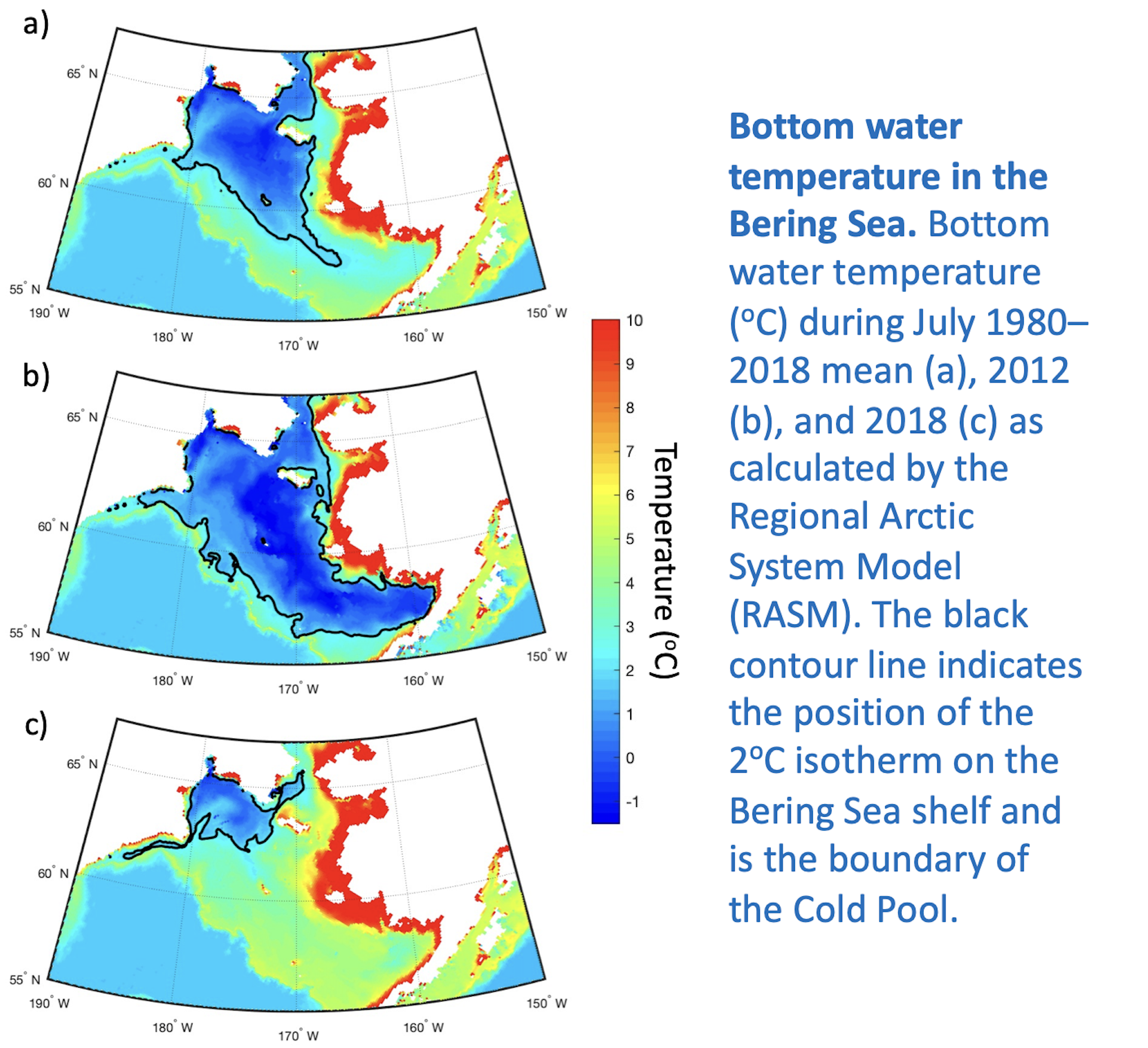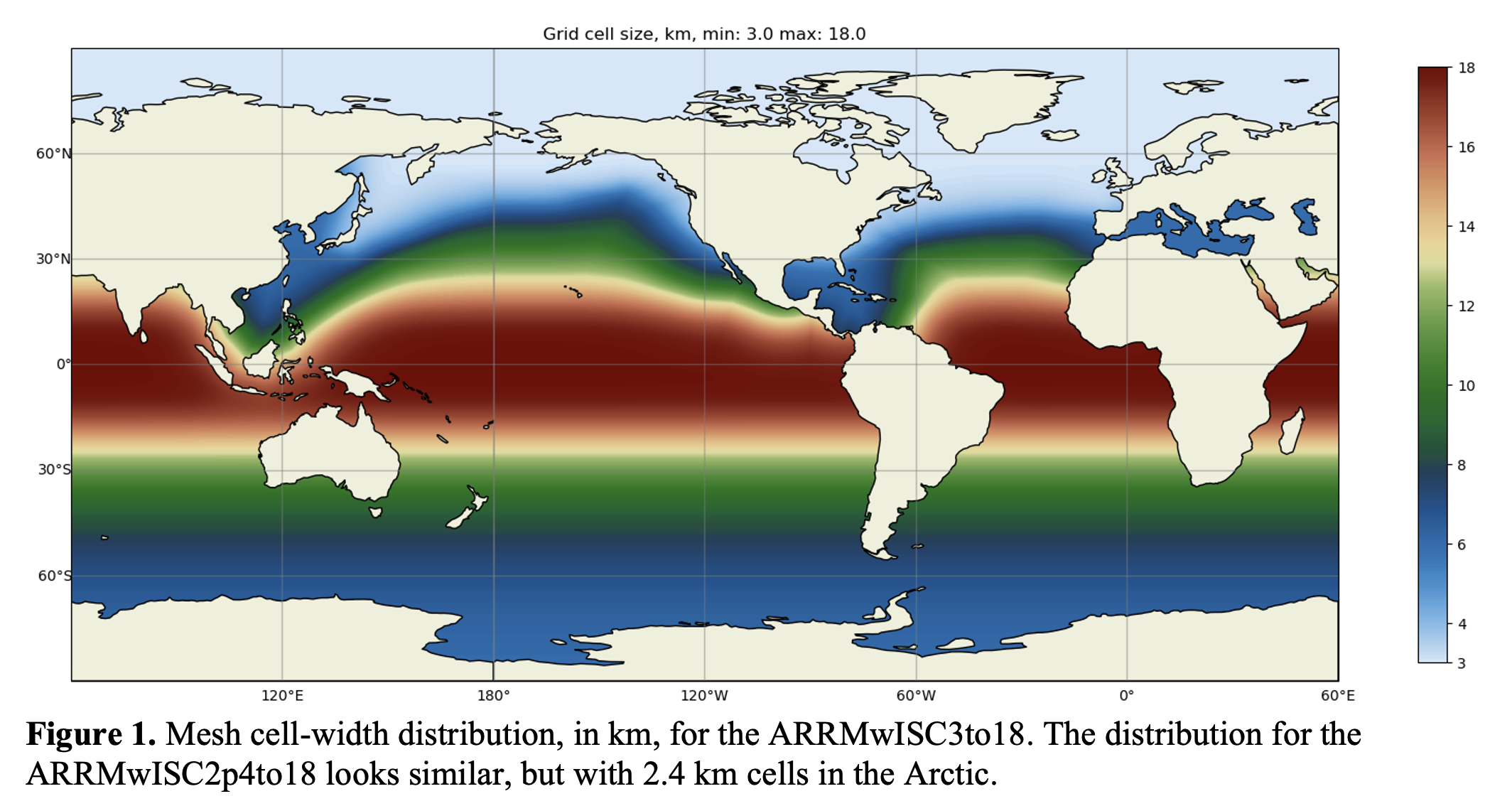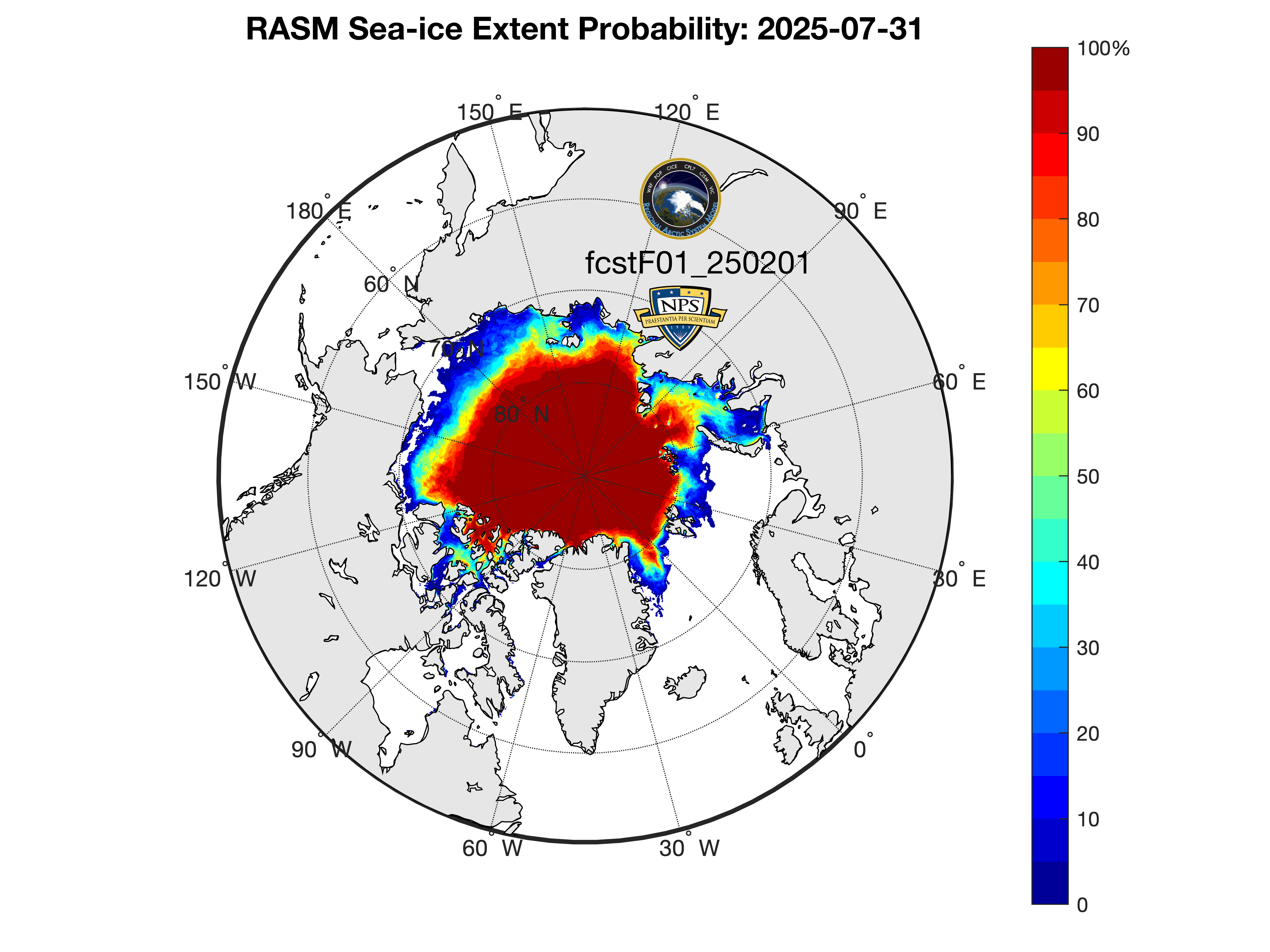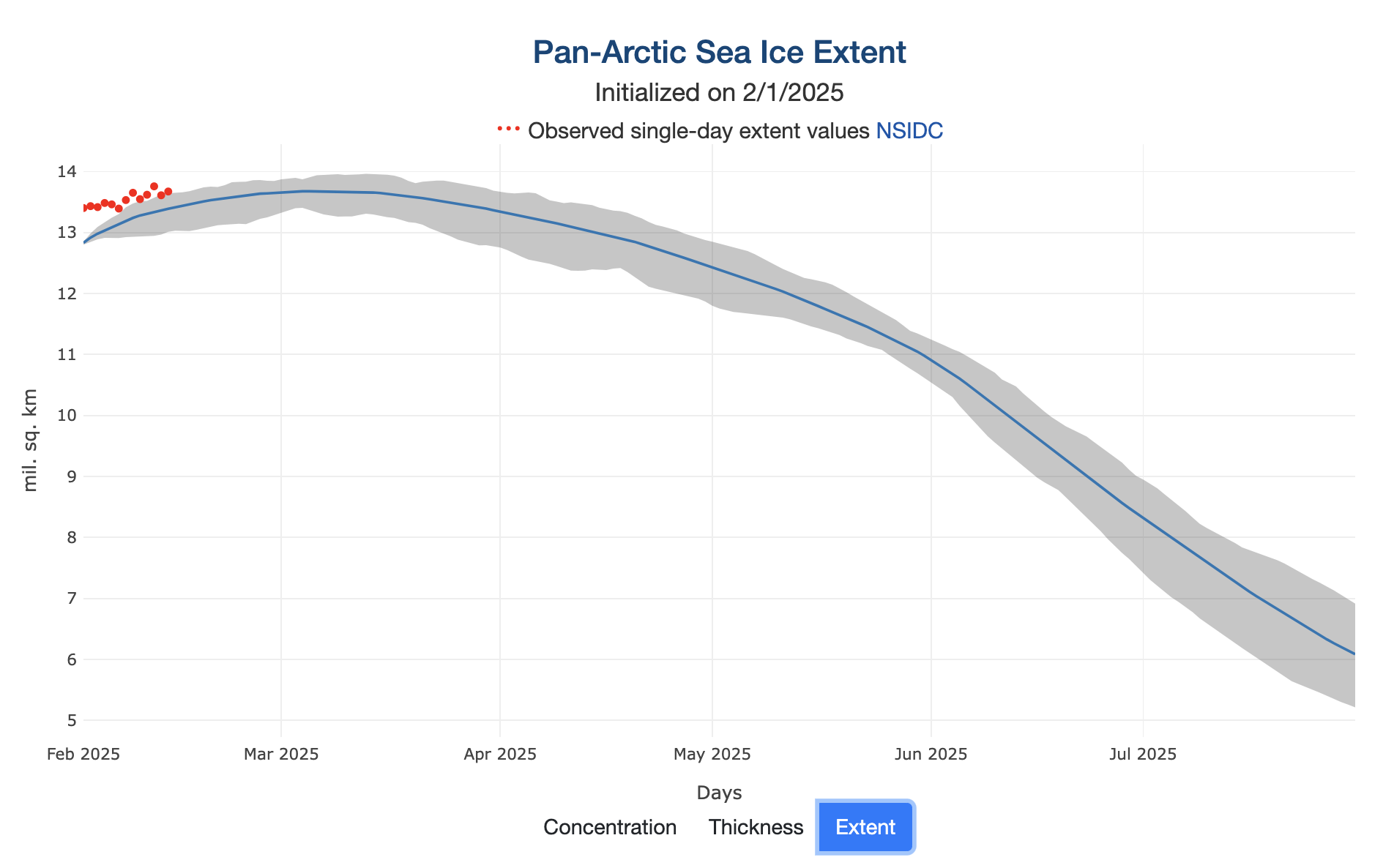Arctic marine biophysical research
Harmful Algal Blooms in the Pacific Arctic: Modeling the Past and Predicting the Future
This project will synthesize the available Arctic observational data on harmful algal blooms (HABs) and Regional Arctic System Model (RASM) historical simulations of the Arctic bio-physical environment for the past four decades and will develop a new capability for intra-annual probabilistic prediction of HABs, leveraging the current RASM sea ice prediction capability. Warming ocean temperatures in the Bering and Chukchi seas increase germination and growth rates of harmful algal species found there, which negatively impacts food security for wildlife and humans in coastal Alaska.

HiLAT-RASM Phase III: Drivers and Impacts of Polar Amplification: A Unifying Approach to Improving Projections of High-Latitude Earth System Change
The overarching goal of the HiLAT-RASM Project Phase III is to develop a framework for assessing multi-component climate system feedbacks on Arctic amplification using a hierarchy of models, including RASM and Energy Exascale Earth System Model (E3SM).

Arctic-Refined and Eddy-Resolving E3SM Ocean and Sea Ice Model to Advance Understanding of Oceanic Forcing of Sea Ice
The research goals of this planned proposal will be to: (1) develop and optimize an eddy resolving ocean and sea ice configuration of the E3SM with ultra-high-resolution refinements over the pan-Arctic region and (2) assess the role of ocean / sea ice mesoscale dynamics on air-sea coupling and mass and property exchanges between Arctic-Subarctic and shelf-basin.

Expanding Arctic Regional Modeling and Predicting Capability from Sub-seasonal to Decadal Time Scales via High-Resolution Dynamical Downscaling
This project will improve and expand the existing Arctic System predictive capability, targeting key U.S. Navy requirements, related to advanced capabilities for operational to strategic Arctic climate predictions. More information can be found on the RASM website.

